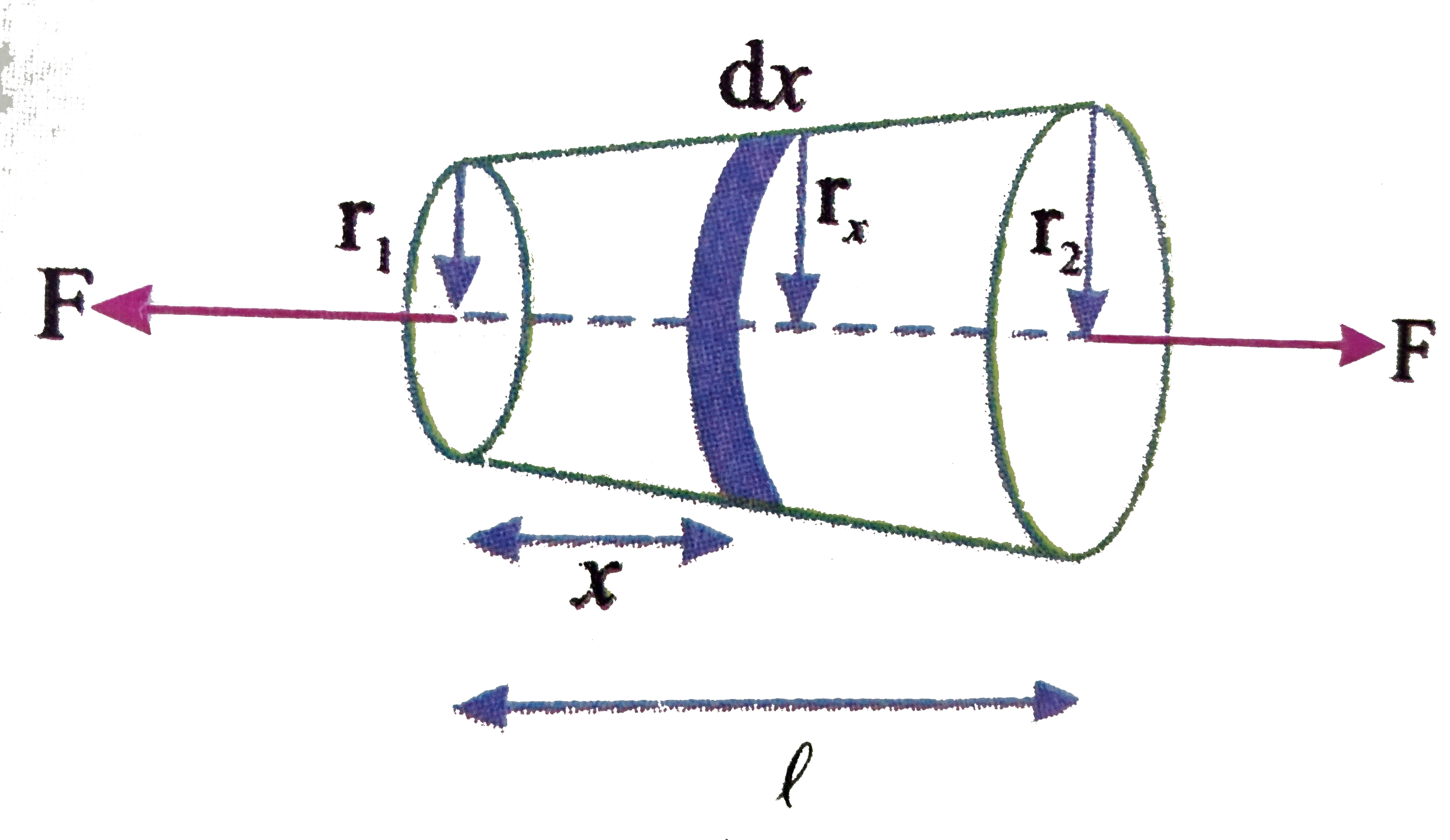A slightly conical wire of length and radii, and is strecthced by two forces each of magnitude applied parallel to length in opposide directions and normal to end faces. If denotes the Young's modulus then find the elogation of the wire .

The correct Answer is:B
Topper's Solved these Questions
- MECHANICAL PROPERTIES OF SOLIDSBook:NARAYNAChapter:MECHANICAL PROPERTIES OF SOLIDSExercise:LEVEL-II (H.W)
Explore 24 Videos
- MECHANICAL PROPERTIES OF SOLIDSBook:NARAYNAChapter:MECHANICAL PROPERTIES OF SOLIDSExercise:MUTI CORRECT ANSWER TYPE
Explore 4 Videos
- MECHANICAL PROPERTIES OF FLUIDSBook:NARAYNAChapter:MECHANICAL PROPERTIES OF FLUIDSExercise:EXERCISE - III
Explore 30 Videos
- MOTION IN A PLANEBook:NARAYNAChapter:MOTION IN A PLANEExercise:Level-II(H.W)
Explore 31 Videos
Similar Questions
A given piece of wire of length l and radius r and resistance R is stretched uniformly to wire of radius r2 .Its new resistance is:
View SolutionA slightly tapring wire of length L and end radii 'a' and 'b' is subjected to stretching forces F, F as shown in

If Y is the Young's Modulus, calculate the extension prouduced in the wire.
View Solution
Knowledge Check
If a conical wire is streatched by two forces F applied parallel to its length and in opposite direction . Normal to end faces . The length of wire is L and its end radius are r1 and r2 . Find out the extension produced .
(Given , Y= Young's moleulus of wire )AFLπr21YBFLπr1YCFLπr1r2YDFLπr1r2Two copper wire of length l and 2l have radii, r and 2r respectively. What si the ratio of their specific resistance.?
A1:2B2:1C1:1D1:3A wire of length 1 m and its area of cross-section is 1 cm2 and Young's modulus of the wire is 1011N/m2. Two forces each equal to F are applied on its two ends in the opposite directions. If the changein length is 1 mm, then the value of F will be
A0.5×104NB104NC2×104ND108N
Find the direction of magnetic field at a point P due to two infinite current carrying wires shown in the figure. Given r1>r2

View SolutionTwo copper wires of length l and 2l have radii r and 2r respectively. What is ratio of their specific resistances ?
View SolutionTwo copper wires of length l and 2l have radii r and 2r respectively. What is ratio of their specific resistances ?
View SolutionTwo copper wire of length l and 2l have radii, r and 2r respectively. What si the ratio of their specific resistance.?
View SolutionA wire of length L and radius r suspended from rigid support of mass M gm be applied its free end, its elongation is l, then its Young's modulus is
View Solution
